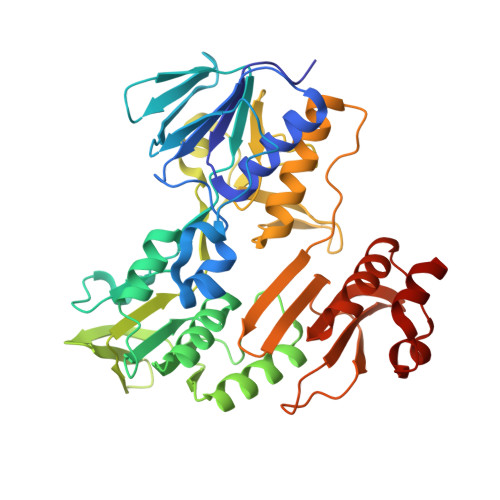Experimental phasing opportunities for macromolecular crystallography at very long wavelengths.
El Omari, K., Duman, R., Mykhaylyk, V., Orr, C.M., Latimer-Smith, M., Winter, G., Grama, V., Qu, F., Bountra, K., Kwong, H.S., Romano, M., Reis, R.I., Vogeley, L., Vecchia, L., Owen, C.D., Wittmann, S., Renner, M., Senda, M., Matsugaki, N., Kawano, Y., Bowden, T.A., Moraes, I., Grimes, J.M., Mancini, E.J., Walsh, M.A., Guzzo, C.R., Owens, R.J., Jones, E.Y., Brown, D.G., Stuart, D.I., Beis, K., Wagner, A.(2023) Commun Chem 6: 219-219
- PubMed: 37828292
- DOI: https://doi.org/10.1038/s42004-023-01014-0
- Primary Citation of Related Structures:
8PWN, 8PX0, 8PX1, 8PX4, 8PX5, 8PX7, 8PX9, 8PXC, 8PXG, 8PXH, 8PXJ, 8PXK, 8PXL, 8PYV, 8PYZ, 8PZ4, 8PZ5 - PubMed Abstract:
Despite recent advances in cryo-electron microscopy and artificial intelligence-based model predictions, a significant fraction of structure determinations by macromolecular crystallography still requires experimental phasing, usually by means of single-wavelength anomalous diffraction (SAD) techniques. Most synchrotron beamlines provide highly brilliant beams of X-rays of between 0.7 and 2?? wavelength. Use of longer wavelengths to access the absorption edges of biologically important lighter atoms such as calcium, potassium, chlorine, sulfur and phosphorus for native-SAD phasing is attractive but technically highly challenging. The long-wavelength beamline I23 at Diamond Light Source overcomes these limitations and extends the accessible wavelength range to ¦Ë?=?5.9??. Here we report 22 macromolecular structures solved in this extended wavelength range, using anomalous scattering from a range of elements which demonstrate the routine feasibility of lighter atom phasing. We suggest that, in light of its advantages, long-wavelength crystallography is a compelling option for experimental phasing.
Organizational Affiliation:
Diamond Light Source, Harwell Science and Innovation Campus, -, OX110DE, UK.















